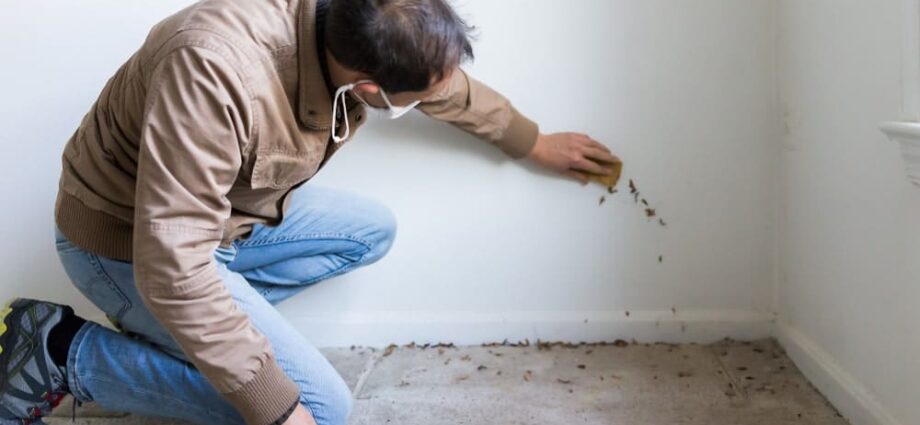If you’ve been feeling under the weather lately and can’t seem to pinpoint the cause, your home might be the culprit. That persistent cough or those unexplained allergy flare-ups could be linked to hidden mold lurking within your walls or ceilings. But how can you be sure? There are subtle signs to watch out for, and knowing where to look is key. Stay tuned to uncover the secrets of detecting hidden mold exposure and what steps you can take to safeguard your health and well-being.
Signs of Hidden Mold Exposure
If you suspect hidden mold exposure, common signs include musty odors, unexplained allergy symptoms, and visible water stains on walls or ceilings. Mold spores, which are tiny particles that can float through the air, are often the culprit behind these signs.
When mold is present in hidden areas like behind walls or under flooring, it releases spores that can cause respiratory issues when inhaled. These issues may manifest as coughing, wheezing, shortness of breath, or even asthma attacks.
Respiratory problems resulting from mold exposure can vary depending on the individual’s sensitivity to mold spores. Some people may experience mild symptoms, while others can have severe reactions.
It’s essential to address hidden mold exposure promptly to prevent further health complications. If you notice any of the signs mentioned earlier, it’s advisable to investigate further and consider seeking professional help to assess and remediate the mold issue in your living environment.
Common Health Symptoms
Common health symptoms associated with hidden mold exposure often manifest as respiratory issues due to inhaling mold spores released in enclosed spaces. Allergies are a common initial sign, with individuals experiencing sneezing, runny or stuffy nose, itchy or watery eyes, and skin irritation. These symptoms may worsen over time if the mold exposure isn’t addressed.
Respiratory issues are also prevalent, such as coughing, wheezing, shortness of breath, and chest tightness. Mold spores can irritate the respiratory tract, leading to these discomforts.
Moreover, headaches are another symptom that can occur due to mold exposure. The presence of mold toxins in the air can trigger headaches or migraines in susceptible individuals.
Furthermore, fatigue is a common complaint among those exposed to hidden mold. Mold exposure can strain the immune system, leading to increased fatigue and a general feeling of being unwell. It’s essential to pay attention to these symptoms and consider the possibility of hidden mold if they persist.
Areas to Inspect
Inspecting your home thoroughly for hidden mold requires a systematic approach to target specific areas where mold growth is most likely to occur. Start by checking moisture sources such as leaky pipes, roofs, or windows as these create ideal conditions for mold to thrive.
Areas with poor ventilation like bathrooms, kitchens, and basements are also common spots for mold growth due to the high humidity levels. Be sure to inspect behind and under appliances, furniture, and in closets where moisture can accumulate unnoticed.
Additionally, pay attention to cleaning products and chemicals that might contribute to mold growth. Some cleaning solutions contain chemicals that promote mold development if not properly ventilated after use. Check for any water leaks under sinks or around laundry machines where cleaning products may have spilled and created a damp environment for mold to grow.
Taking a keen eye to these areas in your home can help you detect hidden mold before it becomes a serious issue affecting your health.
Testing for Mold
Begin by utilizing mold testing kits available at hardware stores or contacting a professional mold inspector to accurately assess the presence of mold in your home. Mold testing methods include air sampling, surface sampling, and bulk sampling.
Air sampling measures the concentration of mold spores in the indoor air, providing insights into the overall indoor air quality. Surface sampling involves swabbing or tape lifting to collect mold particles from surfaces like walls or furniture. Bulk sampling entails gathering material samples like drywall or insulation for laboratory analysis to identify mold species.
Indoor air quality plays a vital role in determining the presence of mold and potential health risks. Mold exposure can lead to respiratory issues, allergies, and other health problems. Testing for mold is essential in maintaining a healthy indoor environment.
Remediation and Prevention
To address mold issues identified through testing, effective remediation and prevention strategies are essential in maintaining a healthy indoor environment. Indoor air quality can be significantly impacted by mold growth, leading to various health issues.
When it comes to remediation, it’s pivotal to address the source of the mold, such as leaks or excess moisture, before removing the mold itself. Hiring a professional remediation service may be necessary for extensive mold infestations to ensure proper removal and prevention of recurrence.
Prevention plays a crucial role in minimizing the risk of mold growth. Regularly inspecting and addressing any water leaks, controlling indoor humidity levels below 60%, and ensuring adequate ventilation in high-moisture areas like bathrooms and kitchens are key preventive measures.
Using air purifiers and dehumidifiers can also help improve indoor air quality and reduce allergy triggers associated with mold exposure. By implementing these remediation and prevention strategies, you can create a healthier living environment for you and your family.
Need medical advice, look here for a great place to get tested for mold exposure.

